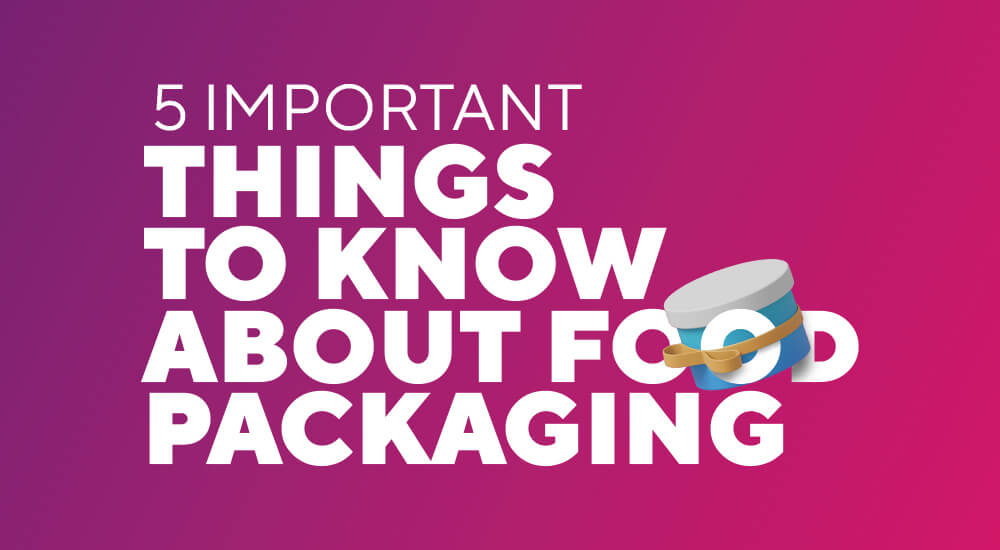Let's Talk
We would love to hear from you. Want to know more about our services or have any questions? Say Hi!
5 Factors to Consider for Food Packaging

Among the largest and the most competitive industries in any economy are the food and beverage industry. This industry faces many challenges in today’s fast-paced world, the most significant being packaging food and beverages. We’re not just talking about fresh food or perishables. We also include food products on supermarket shelves or displayed in eCommerce stores – food with longer shelf life.
When it comes to marketing these products, the packing challenge is amplified given that there is tough competition, and every brand or product is striving to stand out. And all that boils down to one single challenge: packaging design. Every packaging design company knows the importance of differentiation and distinctiveness – and so do we.
So here are some pointers for efficient and appealing food packaging design from Litmus Branding – one of the top packaging design companies in India:
Factors to Consider for Food Packaging
Brand Identity
The subtitle may sound strange, but it’s significant nonetheless. Packaging food is tricky because not only do you have to make the package attractive and protect the food inside, but you also make sure that the package represents your brand.
Every packaging design agency knows that however good the food is, if the package does not tickle the palate, it will not sell, at least not to first-time consumers, and those are perhaps the most important when you want to drive sales. Your consumers should be aware that the yummy treat they are getting, wrapped in an attractive package is courtesy of your brand. Of course, there’s a lot more that they may look for. We’ll come to that in a bit – but the first thing that attracts them is the package.
You’ve probably run down the checklist for creating your brand identity. If not, you can take a quick look at this list:
- Market analysis
- Mission Vision and Goal
- Brand Message
- Mission Vision and Value
- Logo Creation
- Consumer Persona
- Competitor Analysis
As a designer, you should ensure that every package you design for your product reflects brand identity making it easy for both new and existing consumers to recognize it from afar.
Complement the Content
Can you imagine pastry in a tin? Technically, it is possible, yes. But what about the look and feel? What about user experience? While preservation and safety are prime concerns – and they should be – UX matters too. So when considering your packaging material, shape, and other elements, consider what your consumer expects to feel when they see the packaging. That’s why you cannot have pastry in a tin or chips in card paper boxes. No matter how well you pack them, your consumer will never relate the product to the packaging.
Perhaps, the best example of complementary packaging is Kinder Joy. The tiny eggshells are attractive, easy to crack, and perfectly complement the little surprise they contain. The eggshell itself turns into a small toy.
Talking about content, the shelf life of the product is also an important consideration.
Products with longer shelf life are easier to pack than perishables or delicacies like pastry.
Architecture
By architecture, we mean the shape of the package. This means three things – purpose, shape, and attraction. First and foremost is the function – the packaging should be such that it serves the purpose of protecting food—nothing more, nothing less – at least in that area. But as we said, attraction is vital in today’s competitive world, so shape matters too.
Pop-fizz soda cans were invented for a reason. Not only does it appeal to the on-the-go culture of the GenZ, the aluminium tin. The pick and peel packaging of Cadbury is part of the attraction.
But the best example of packaging architecture is the red and white eggshell (shape) packaging of Kinder Joy attracts kids (attraction and UX) like bees to honey – and they’re easy to crack. Being made from plastic, they also effectively protect the chocolate and milk cream inside (purpose).
Consumers need strong motivation to pay the price of your product. Growcode – the company that builds online stores – cites poor urgency building as the #2 reason why users don’t add products to the cart. Digitaldoughnut puts it at t#1. Of course, they are talking about e-stores, but the same applies to physical stores, don’t you think?
Your package should grab your consumers’ attention in a crowd of similar products and lure them to put your product in the cart.
Versatility
Yes, you need to attract consumers. Yes, your packaging design should serve the primary purpose of preserving the contents. But it should also be convenient. Pepsi is sold in cans and plastic bottles of different sizes – each containing a different quantity of the drink. That’s because parents of little kids prefer larger – and more economical – plastic bottles from which they can dole out approved quantities of the drink as a reward or at birthday parties. Cans are great for teens. But the label design is the same across products. The blue, white, and red coloured circular logo is easily recognisable, as is the product name in white.
The design is such that it fits as easily on a label as it does on the wider surface of the can. Whether you are designing a logo or product label, you should keep in mind this type of versatility to use the same design across packages. Bear in mind that apart from the logo and product name – which naturally takes centre stage – there is a whole lot of other information – such as date of manufacture and expiry, standardisation, ingredients, and so on – that you need to pack into the design.
When it comes to versatility – or agility – the four most important factors to consider are appeal, consistency, recognition or identification, and information.
Emotional Appeal
Both positive and negative emotions are deeply entrenched in the memory. Package designs that elicit strong emotions are remembered. The mother who could check out peacefully because her kids were occupied with the new Kinder Joy they just bought will remember it the next time she visits the supermarket. That’s the reason why these cute eggshells are often found – bare and un-boxed – on shelves close to the checkout counter.
Research has proved that long-term memory is emotional. Its creation depends upon the emotional experience in the present.
That is not to say that your packaging should not call attention to the benefit and value of the product. Definitely, it should. That’s what will carry your product in the long term. So it should display all the product details clearly and concisely. That’s what clean labelling is all about. But product label design is not merely about information. It is about tempting your consumer and adding value too.
So, if you have a lactose-free or sugar-free product – announce it. If your product is organic or uses biodegradable packaging material, let your consumers know. If you have a low-carb product, tell your weight-conscious consumers that they can have it. That’s the value. Then, go ahead and relate that value to an emotion.
Designing packaging for food is a lot more than simply creating a container or label for the product. It’s about appealing to the emotions and tickling the palate of the consumer. It’s about standing out in a crowd of similar products through its differentiation and distinctiveness. It’s the way you show you care for your consumers.
Litmus Branding, an experienced packaging design agency in India, is here to help you with your packaging design solutions. Call or write to us today.


